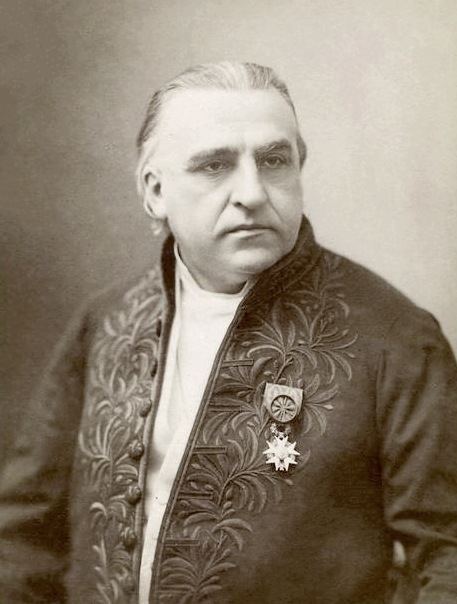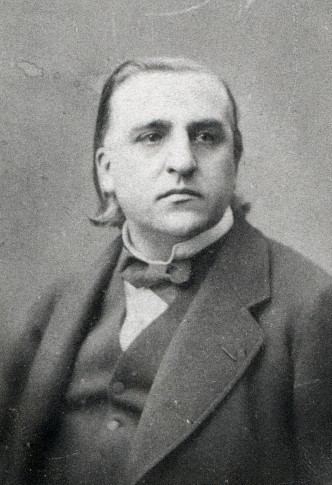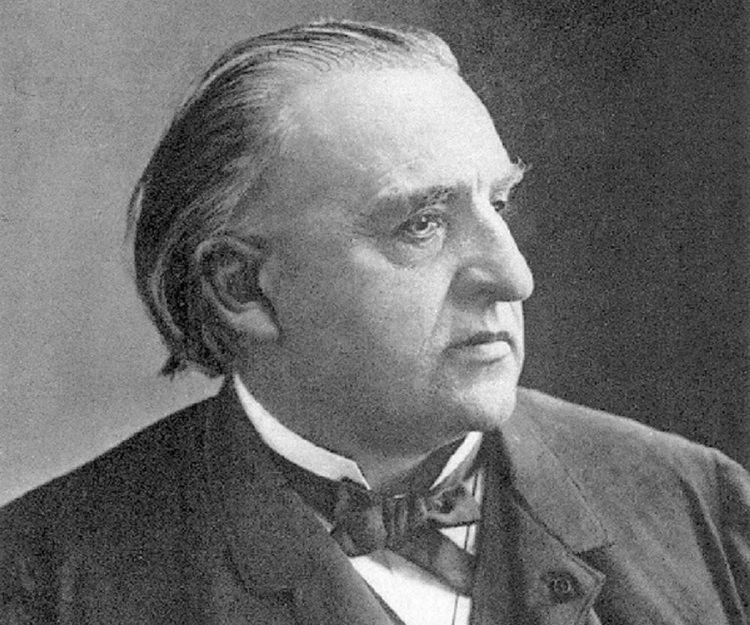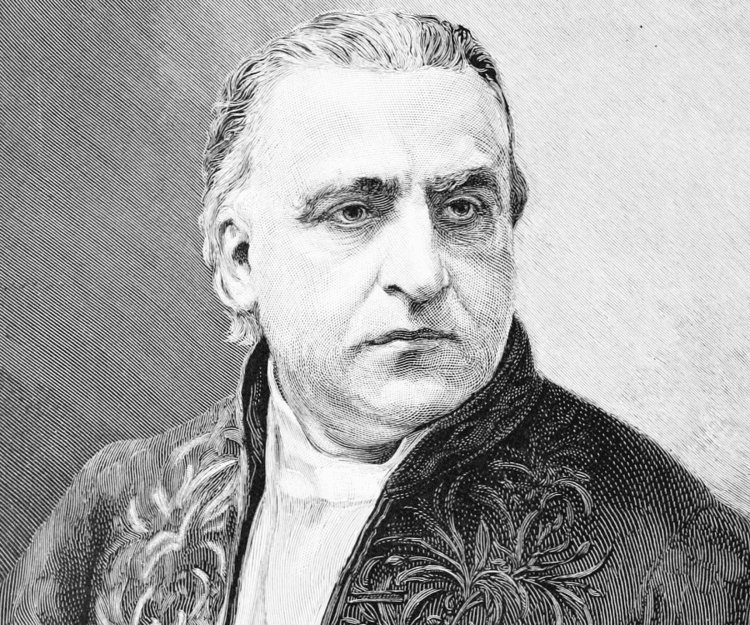Residence France Role Medical Doctor | Name Jean-Martin Charcot Nationality French Children Jean-Baptiste Charcot | |
 | ||
Born 29 November 1825Paris, France ( 1825-11-29 ) Institutions Pitie-Salpetriere Hospital Known for Studying and discovering neurological diseases Died August 16, 1893, Nievre, France Parents Simon-Pierre Charcot, Jeanne-Georgette Saussier Books Clinical Lectures on Disea, Lectures on localizati, Clinical lectures on the disea, Lectures on the Diseases, Clinical Lectures on Senile Similar People Sigmund Freud, Jean‑Baptiste Charcot, Josef Breuer, Paul Richer, Pierre Janet | ||
Jean martin charcot lou gehrig disease awareness challenge
Jean-Martin Charcot (; [ʃaʁko]; 29 November 1825 – 16 August 1893) was a French neurologist and professor of anatomical pathology. He is best known today for his work on hypnosis and hysteria, in particular his work with his hysteria patient Louise Augustine Gleizes. He is also known as "the founder of modern neurology", and his name has been associated with at least 15 medical eponyms, including Charcot–Marie–Tooth disease and Charcot disease (better known as amyotrophic lateral sclerosis, motor neurone disease, or Lou Gehrig disease). Charcot has been referred to as "the father of French neurology and one of the world's pioneers of neurology". His work greatly influenced the developing fields of neurology and psychology; modern psychiatry owes much to the work of Charcot and his direct followers. He was the "foremost neurologist of late nineteenth-century France" and has been called "the Napoleon of the neuroses".
Contents
- Jean martin charcot lou gehrig disease awareness challenge
- Jean martin charcot
- Personal life
- Neurology
- Studies on hypnosis and hysteria
- Arts
- Distorted views of Charcot
- Legacy
- Eponyms
- Charcot in popular culture
- Miscellaneous
- Quotations
- References

Jean martin charcot
Personal life

Born in Paris, Charcot worked and taught at the famous Salpêtrière Hospital for 33 years. His reputation as an instructor drew students from all over Europe. In 1882, he established a neurology clinic at Salpêtrière, which was the first of its kind in Europe. Charcot was a part of the French neurological tradition and studied under, and greatly revered, Duchenne de Boulogne.
"He married a rich widow, Madame Durvis, in 1862 and had two children, Jeanne and Jean-Baptiste, who later became a doctor and a famous polar explorer".

He was accused of being an atheist.
Neurology
Charcot's primary focus was neurology. He named and was the first to describe multiple sclerosis. Summarizing previous reports and adding his own clinical and pathological observations, Charcot called the disease sclérose en plaques. The three signs of multiple sclerosis now known as Charcot's triad 1 are nystagmus, intention tremor, and telegraphic speech, though these are not unique to MS. Charcot also observed cognition changes, describing his patients as having a "marked enfeeblement of the memory" and "conceptions that formed slowly". He was also the first to describe a disorder known as Charcot joint or Charcot arthropathy, a degeneration of joint surfaces resulting from loss of proprioception. He researched the functions of different parts of the brain and the role of arteries in cerebral hemorrhage.

Charcot was among the first to describe Charcot–Marie–Tooth disease (CMT). The announcement was made simultaneously with Pierre Marie of France (his resident) and Howard Henry Tooth of England. The disease is also sometimes called peroneal muscular atrophy.

Charcot's studies between 1868 and 1881 were a landmark in the understanding of Parkinson's disease. Among other advances he made the distinction between rigidity, weakness and bradykinesia. He also led the disease formerly named paralysis agitans (shaking palsy) to be renamed after James Parkinson. He also noted apparent variations on PD, such as Parkinson's disease with hyperextension. Charcot received the first European professional chair of clinical diseases for the nervous system in 1882.
Studies on hypnosis and hysteria
Charcot is best known today for his work on hypnosis and hysteria. In particular, he is best remembered for his work with his hysteria patient Louise Augustine Gleizes, who somewhat increased his fame during his lifetime; however, Marie "Blanche" Wittmann, known as the Queen of Hysterics, was his most famous hysteria patient at the time. He initially believed that hysteria was a neurological disorder for which patients were pre-disposed by hereditary features of their nervous system, but near the end of his life he concluded that hysteria was a psychological disease.
Charcot first began studying hysteria after creating a special ward for non-insane females with "hystero-epilepsy". He discovered two distinct forms of hysteria among these women: minor hysteria and major hysteria. His interest in hysteria and hypnotism "developed at a time when the general public was fascinated in 'animal magnetism' and 'mesmerization'", which was later revealed to be a method of inducing hypnosis. His study of hysteria "attract[ed] both scientific and social notoriety". Bogousslavsky, Walusinski, and Veyrunes write:
Charcot and his school considered the ability to be hypnotized as a clinical feature of hysteria ... For the members of the Salpêtrière School, susceptibility to hypnotism was synonymous with disease, i.e. hysteria, although they later recognized ... that grand hypnotisme (in hysterics) should be differentiated from petit hypnotisme, which corresponded to the hypnosis of ordinary people.
Charcot argued vehemently against the widespread medical and popular prejudice that hysteria was rarely found in men, presenting several cases of traumatic male hysteria. He taught that due to this prejudice these "cases often went unrecognised, even by distinguished doctors" and could occur in such models of masculinity as railway engineers or soldiers. Charcot's analysis, in particular his view of hysteria as an organic condition which could be caused by trauma, paved the way for understanding neurological symptoms arising from industrial-accident or war-related traumas.
The Salpêtrière School's position on hypnosis was sharply criticized by Hippolyte Bernheim, another leading neurologist of the time. Bernheim argued that the hypnosis and hysteria phenomena that Charcot had famously demonstrated were in fact due to suggestion. However, Charcot himself had had longstanding concerns about the use of hypnosis in treatment and about its effect on patients. He also was concerned that the sensationalism hypnosis attracted had robbed it of its scientific interest, and that the quarrel with Bernheim, amplified by Charcot's pupil Georges Gilles de la Tourette, had "damaged" hypnotism.
Arts
Charcot thought of art as a crucial tool of the clinicoanatomic method. He used photos and drawings, many made by himself or his students, in his classes and conferences. He also drew outside the neurology domain, as a personal hobby. Like Duchenne, he is considered a key figure in the incorporation of photography to the study of neurological cases.
Distorted views of Charcot
Distorted views of Charcot as harsh and tyrannical have arisen from some sources that rely on a fanciful autobiographical novel by Axel Munthe, The Story of San Michele (1929). Munthe claimed to have been Charcot's assistant, but in fact, Munthe was just a medical student among hundreds of others. Munthe's most direct contact with Charcot was when Munthe helped a young female patient "escape" from a ward of the hospital and took her into his home. Charcot threatened to report this to the police, and ordered that Munthe not be allowed on the wards of the hospital again.
In a 1931 letter to The New York Times Book Review, Charcot's son Jean-Baptiste Charcot, who had, himself, been a formal student of his father at the Salpêtrière, emphatically stated:
I can certify that Dr Munthe never was trained by my father"; and, further, that "[although Munthe] may have [incidentally] followed, like hundreds of others, some courses of Charcot, ...he was not trained by him and certainly never had the intimacy of which he boasts [in his recently reviewed work, Memories and Vagaries]. ...I was, myself, a student at the Salpetriere then, and can certify that he was not one of his students and that my father never knew him. Everything he says about professor Charcot is false....
Bengt Jangfeldt, in his 2008 biography, Axel Munthe: The Road to San Michele, states that "Charcot is not mentioned in a single letter of Axel's out of the hundreds that have been preserved from his Paris years" (p. 96).
Legacy
One of Charcot's greatest legacies as a clinician is his contribution to the development of systematic neurological examination, correlating a set of clinical signs with specific lesions. This was made possible by his pioneering long-term studies of patients, coupled with microscopic and anatomic analysis derived from eventual autopsies. This led to the first clear delination of various neurological diseases and classic description of them. For example, amyotrophic lateral sclerosis.
Charcot is just as famous for his influence on those who had studied with him: Sigmund Freud, Joseph Babinski, Pierre Janet, William James, Pierre Marie, Albert Londe, Charles-Joseph Bouchard, Georges Gilles de la Tourette, Alfred Binet, Jean Leguirec and Albert Pitres. Charcot bestowed the eponym for Tourette syndrome in honor of his student, Georges Gilles de la Tourette.
Although, by the 1870s, Charcot was France's best known physician, his ideas about hysteria were later refuted, and French psychiatry did not recover for decades. An example of the dismissal of Charcot's views can be found in Edward Shorter's History of Psychiatry: Shorter states that Charcot understood "almost nothing" about major psychiatric illness, and that he was "quite lacking in common sense and grandiosely sure of his own judgement". This perspective overlooks the fact that Charcot never claimed to be a psychiatrist or to be practising psychiatry, a field that was separately organized from neurology within France's educational and public health systems. After Charcot's death, the phenomenon of "hysteria" that he had described was no longer recognized as a real neurological condition, but was considered to be an "artifact of suggestion". However, Charcot continued to have a "prominent" position in French psychiatry and psychology. The negative evaluation of Charcot's work on hysteria was influenced by a significant shift in diagnostic criteria and understanding of hysteria which occurred in the decades following his death. The historical perspective on Charcot's work on hysteria has also been distorted by viewing him as a precursor of Freud. After Charcot's death, Freud and Janet wrote articles on his importance. However, Charcot's work on hysteria and hypnotism was at odds with the perspective Freud made famous, since Charcot believed in neurological determinism.
The Charcot-Janet school, which formed from the work of Charcot and his student Janet, contributed greatly to knowledge of multiple personality disorders.
Eponyms
Charcot's name is associated with many diseases and conditions including:
Charcot in popular culture
A song "Let Yourself Go" from The Alan Parsons Project's album Freudiana is dedicated to Doctor Charcot.
Charcot appears, along with Madame Curie and Charcot's patient "Blanche" (Marie "Blanche" Wittmann), in Per Olov Enquist's 2004 novel The Book about Blanche and Marie (English translation, 2006, ISBN 1-58567-668-3). He also appears in the 2005 novel by Sebastian Faulks, Human Traces.
A 2012 French historical drama film, Augustine, is about a love affair between Charcot and his patient Louise Augustine Gleizes, who was known as Augustine or A. In reality, there was no sexual relationship between her and Charcot. The New York Times film review describes Charcot as "a complicated figure in retrospect, at once a charlatan and a pioneer, a monster and a modernizer".
Miscellaneous
A collection of Charcot's correspondence is held at the United States National Library of Medicine.
Charcot Island in Antarctica was discovered by his son, Jean-Baptiste Charcot, who named the Island in honor of his father.
The Charcot Award is given every two years by the Multiple Sclerosis International Federation for a lifetime of outstanding research into the understanding or treatment of multiple sclerosis.
